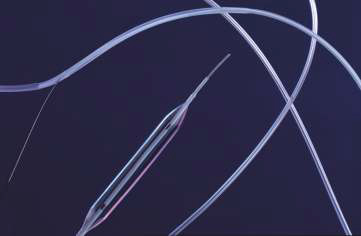|
Precision Extrusion For
Thin-Walled Catheter Manufacturing
 Thin-walled catheters are a requirement of many
minimally invasive cardiovascular, neurovascular, and endovascular procedures. Thin-walled catheters are a requirement of many
minimally invasive cardiovascular, neurovascular, and endovascular procedures.
Catheters are used in a wide range of minimally
invasive procedures as a tool for transporting treatments and therapies through
small vasculatures to difficult-to reach areas of the body such as the lower leg
or brain.
There are several design challenges involved in
catheter development, one of the most notable being the need for inside
diameters wide enough to allow for the movement of therapeutic devices and
implants all while ensuring that outside diameters – which are entirely limited
by blood vessel anatomy – remain acceptable.
Faced with this challenge, device developers have
set on thin walled catheter designs as the solution. Such designs also
facilitate a high degree of flexibility in the tube, perfect in demanding
surgical procedures.
When producing thin-walled catheters, careful
execution of the extrusion process with a strong focus on tight tolerances takes
utmost importance. The specifications usually test the limits of free-form
extrusion, which depends on air pressure within the tube. Instead, an
over-extrusion process assisted by mandrels can be a more reliable way to
control the profile.
Mandrel - assisted extrusion
Mandrels are cylindrical, tapered rods, typically
made of stainless steel. In catheter forming, mandrels provide support and
control of the inside diameter. Once the catheter has been built, the mandrel is
removed, leaving behind a consistent hollow tube with a smooth inner surface.
Some mandrels are produced with a PTFE coating to facilitate easy removal.
Using specially designed mandrels in manufacturing
can also help to deliver more complex catheter designs, such as those with
tapered profiles. According to leading medical wire contract manufacturer Custom
Wire Technologies (CWT), mandrels tend to have the most unique design requests
of the products it manufactures. Requests often include tapers, steps, radii,
flats, and D-shapes.
While many catheter manufacturers use traditional
wire mandrels, some opt for a cost-effective plastic. When it comes to producing
microcatheters, wire is typically preferred due to its ability to be processed
to smaller diameters. In addition, metal mandrels are essential in applications
that involve high processing temperatures, where plastic would melt.
https://www.medicaldevice-network.com/sponsored/thinwalled-catheter-manufacturing/ |

